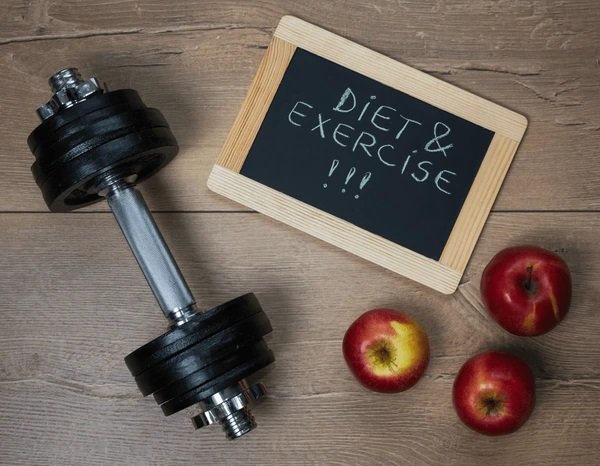
Overcoming Weight Loss Plateaus: The Role of Exercise and Diet

Overcoming Weight Loss Plateaus: The Role of Exercise and Diet
Weight loss can be a rewarding journey, but it often comes with its challenges. One of the most frustrating stages people face is hitting a weight loss plateau. This is when your progress comes to a halt, and despite following your routine diligently, the scale refuses to budge. Understanding why plateaus happen and how to overcome them can make all the difference.
What is a Weight Loss Plateau?
A weight loss plateau occurs when your body adapts to your current diet and exercise routine, resulting in a slowdown or halt in weight loss. This is a normal part of the process and happens as your body becomes more efficient at performing the same activities. However, it doesn’t mean your weight loss journey is over. There are several strategies to push through and continue progressing toward your goals.
Why Do Plateaus Happen?
Metabolic Adaptation: As you lose weight, your body burns fewer calories at rest because it weighs less. This natural decrease in metabolic rate can cause your weight loss to slow down.
Loss of Lean Muscle Mass: If your exercise routine isn’t focused on strength training, you might lose muscle along with fat. Muscle burns more calories than fat, so losing muscle mass can contribute to a plateau.
Consistency: Sometimes, the cause of a plateau is as simple as a slight dip in consistency. A few extra cheat meals or skipping workouts here and there can stall progress without you realizing it.
Dietary Habits: You may unknowingly have become more relaxed with portion sizes or the quality of food you’re eating. Even small changes, like increased carb intake or sugar consumption, can affect your results.
Overcoming Plateaus Through Diet
Revise Your Caloric Intake: If your weight loss has slowed down, it may be time to recalculate your caloric needs. As you lose weight, you require fewer calories. Use a calorie tracker to adjust your intake accordingly.
Macronutrient Adjustments: A common mistake when people hit a plateau is that they don’t reevaluate their macronutrient ratios. Consider reducing your carbohydrate intake and increasing protein. This helps maintain muscle mass and promotes fat burning.
Incorporate More Fiber: Fiber-rich foods, such as vegetables, fruits, legumes, and whole grains, help keep you full longer and support digestion. Fiber also plays a key role in fat loss by regulating insulin levels and reducing hunger.
Hydration: Often overlooked, drinking enough water is essential. Staying hydrated can prevent overeating by reducing hunger and improving metabolic function.
Overcoming Plateaus Through Exercise
Switch Up Your Workout Routine: If you’ve been doing the same exercises for a while, your body has likely adapted. To reignite fat burning, introduce new activities. High-intensity interval training (HIIT), strength training, or even a different form of cardio can kickstart your metabolism again.
Focus on Strength Training: Strength training helps you build lean muscle mass, which boosts your metabolism and helps you burn more calories at rest. Include full-body exercises like squats, lunges, and deadlifts in your routine.
Increase Workout Intensity: To break through a plateau, you may need to push yourself harder. Increase the intensity of your workouts by adding more weight, increasing the duration, or doing exercises at a faster pace.
Rest and Recovery: It’s crucial to give your body time to recover. Overtraining can lead to stress, which impacts hormone levels and impedes fat loss. Incorporate rest days and prioritize sleep to allow your body to repair and rebuild muscle.
How Midas Wellness Hub Helps Break Through Plateaus
At Midas Wellness Hub, we understand that plateaus are a normal part of any weight loss journey. To help you push past these hurdles, we offer a combination of personalized diet plans, advanced body treatments, and expert guidance.
Customized Diet Plans: We offer tailored diet plans that take into account your specific body type, metabolic rate, and weight loss goals. Our dietitian ensures that your caloric intake and macronutrient distribution are adjusted to help you break through the plateau.
Slimming and Body
Treatments: At Midas Wellness Hub, we offer a variety of slimming treatments like Radio Frequency (RF) Therapy, Cryolipolysis (Fat Freezing), and Body Contouring to help enhance fat loss and body reshaping. These treatments are designed to complement your diet and exercise regimen by targeting stubborn fat areas that are difficult to reduce through conventional methods.
Personalized Fitness Plans: Our experts work with you to create an effective workout routine, incorporating strength training, HIIT, and other forms of exercise to boost metabolism and encourage fat burning. We focus on maintaining lean muscle mass, which is crucial for keeping your metabolism active.
Emotional and Mental Support: We understand that motivation is key to weight loss success. Our holistic approach includes providing the necessary mental and emotional support to keep you motivated and focused on your goals.
Advanced Technology for Tracking Progress: To keep you on track, we utilize body composition analysis and other advanced tools to monitor your progress and adjust your plan as needed.
Conclusion
Weight loss plateaus are a natural part of the journey, but they don’t have to be the end of the road. By tweaking your diet, modifying your exercise routine, and staying consistent, you can break through the plateau and continue to achieve your weight loss goals.
At Midas Wellness Hub, we offer a comprehensive approach with personalized diet and fitness plans, along with advanced slimming treatments, to help you overcome plateaus and keep progressing.
FAQs
A plateau can last anywhere from a few days to several weeks, but with the right approach, it can be overcome.
Yes, recalculating your caloric intake is essential, especially as your body’s caloric needs decrease with weight loss.
Temporary weight gain can occur due to water retention, increased muscle mass, or hormonal fluctuations. Focus on the overall trend, not just the daily scale readings.
It’s recommended to change your routine every 4-6 weeks to prevent adaptation and continue seeing results.
Chronic stress can lead to an increase in cortisol levels, which can contribute to fat storage, especially around the belly. Managing stress is key to overcoming plateaus.









Hitting a plateau during weight loss can be so frustrating, and I like how you highlighted the importance of adjusting both exercise and diet instead of relying on just one. In my experience, even small changes—like switching up workout intensity or being mindful of hidden calories—can restart progress. It’s encouraging to see a balanced approach emphasized here rather than quick fixes.
Thank you so much for sharing your perspective it’s wonderful to hear from someone who truly understands the artistry behind microblading. You’ve put it perfectly: the best results really do come from a collaboration of natural shape, skin type, technique, and aftercare. We couldn’t agree more that subtle, well-designed brows create the most transformative yet natural look. We’re glad the message resonated with you!
For more details contact us on 7506019315 or
visit us Shop no 2, Krishna Koyna, Kastur Park Rd, Kastur Park, Borivali West, Mumbai, Maharashtra 400092